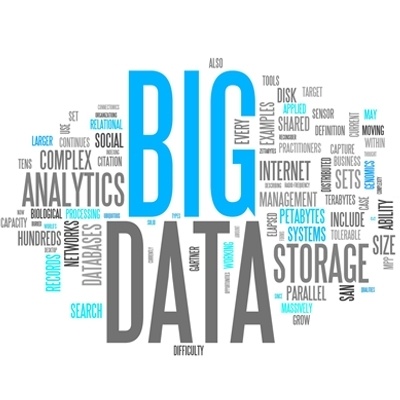How Big Data Can Influence Virtual Education
The education sector has seen many developments in this decade, and situations such as Covid-19 have transformed the industry on a huge scale. Coming to online education, the culture of open universities and distance learning is the new normal. Now, learning is not limited to the limitations of miles or kilometers due to technology. Thus, with time, as technological innovations are expanding, experts are finding ways to make online learning more efficient. A report by Research.com states that by 2026, the eLearning industry is expected to touch a threshold of $336.98 billion globally [1]. eLearning apps like Coursera, Udemy, and Khan Academy saw a huge boost in their download count during the lockdown when learning from home was the only option left.
What Is Big Data And How Does It Work?
Now let’s throw some insight on the term Big Data for readers who are not familiar with it. Big Data, as the name suggests, is a process of collecting data based on user behavior, pattern, understanding, and other factors. Organizations such as Netflix are using Big Data to identify the taste and preferences of users of the platform. Accordingly, combined with deep learning, Artificial Intelligence uses Big Data to recommend and customize the homepage for the user.
There are 3 stages of the entire process:
- Collecting Big Data
- Using deep learning techniques to feed it to AI
- AI customizing services for users accordingly
How Big Data Influences The Online Sector
Online learning is coming out as a more efficient system compared to the traditional model of education. From making education more accessible to focusing on students individually, online learning makes more effective and entertaining ways of studying possible. For instance, Big Data analytics tools collect weaknesses and strong points of students that are using the platform, then AI customizes suggestions and tips to target and help students with weak points accordingly. With Big Data, students also have the freedom to review their analytics, like graphs including their learning patterns, how much time they spend on each chapter, how they can improve their pattern-solving skills, and if there are better and alternative ways to solve equations.
1. Analytics For Cloud Management
To be less dependent on hardware limitations, the database architecture of modern apps is generally cloud-based, and Big Data helps these apps have a smooth data management process. Blockchain and cloud integration in the eLearning process do not only make it reachable to more users but also help users in accessing services without worrying about the limitations of their devices.
2. Prepare Customized Learning Tips
As mentioned above, Big Data can help educators in collecting data defining students’ behavior and patterns. That data can also be used to observe their strengths and weaknesses, or with the help of an AI, students can have personal guidance to improve their studying patterns. There are factors that might be collected through Big Data—formulas used to solve an equation, time consumed in solving a problem, skipped attempts, number of attempts taken to solve questions, and more. Through detailed analysis, either educators or AI can provide feedback to students accordingly.
3. Make Learning More Interesting
Big Data combined with other technologies such as Augmented Reality (AR) and Virtual Reality (VR) has the potential to influence the education sector positively. Big Data can help systems in learning the results of every specific action that students can take. For instance, medical students can get a graph representation through AR and VR for each decision they make for treatment. The representation will have data collected through Big Data tools. Thus, almost real representations will be provided to help students in understanding the consequences of their actions. This not only makes learning more interesting but also helps students in memorizing concepts better, especially concepts that are going to be useful in the real world.
4. Make Education Cheaper Or Free
Now, how can Big Data make studies cheaper? Well, in many countries, education is not cheap, especially for young students who are also working to earn and to survive. Big Data’s role can be to eliminate the need for teachers for basic levels of education. In short, Big Data with AI can help students in learning for free by downloading a simple app. Examples such as Khan Academy that provide free education resources to students from all over the world already exist. Even on Udemy and Coursera, students can learn from free courses but they do not get certificates or degrees with the free plan.
Conclusion
Big Data is a developing technology. With time new innovations are coming into existence. In combining Big Data with other technologies such as AI and deep learning, there are many opportunities left to explore. For the education sector, Big Data is the real deal and can improve it for the better. Also, Big Data can play a crucial role in creating a sustainable virtual learning environment. Big Data can not only influence the quality of education for good, but it can also reduce the burden on teachers and provide them with better tools to identify the amount of attention needed by students, according to their requirements.
In the end, hopefully, this article was informative and useful for you. Until next time, Godspeed!
References:
[1] How is Big Data Making a Difference in the Promotion of eLearning Apps?








